Abstract
1. Activity of the paraventricular nucleus neurones was recorded by micro-electrodes during resting conditions and while various osmotic, chemical, direct and indirect neural stimuli were applied. This activity was correlated with evidence of oxytocin release by recording milk ejection responses.
2. Seventy-four per cent of all paraventricular nucleus neurones were osmosensitive in that firing was augmented following close arterial injection of hypertonic solutions (1 ml. 1 M-NaCl in 10-15 sec). A very few neurones showed decreased activity and in twenty-two per cent no change at all occurred following injection. Evidence indicated that the observed depressions of cellular firing rate were due to other than osmotic stimulation.
3. In post-partum cats an osmotically-induced neurone discharge increase was accompanied by a milk ejection response equivalent to that produced by 2-3 m-u. of oxytocin.
4. Paraventricular neurones were also sensitive to acetylcholine. Intracarotid injections of 40-80 μg of acetylcholine greatly increased discharge rates and caused a very definite milk ejection response.
5. Stimulation of the nipples by gentle suction, but not by electrical shock, and distension of the uterus in post-partum cats increased unit discharge in the paraventricular nucleus and evoked a milk ejection response.
6. Neurones of the paraventricular nucleus, unlike those of the supraoptic nucleus, did not appear to be specifically responsive to electrical stimulation of skin and muscle afferent or of central nervous structures. Such stimuli did cause slight augmentations or depressions in firing rates of cells within and adjacent to the paraventricular nuclei, but many neurones were unaffected. Stimuli such as those applied appeared to have a general central effect involving paraventricular as well as many other neurones.
7. Direct electrical excitation of the pituitary stalk produced a milk ejection response in post-partum cats. Electrical pulses applied to the paraventricular nuclei were less effective for reasons discussed.
Full text
PDF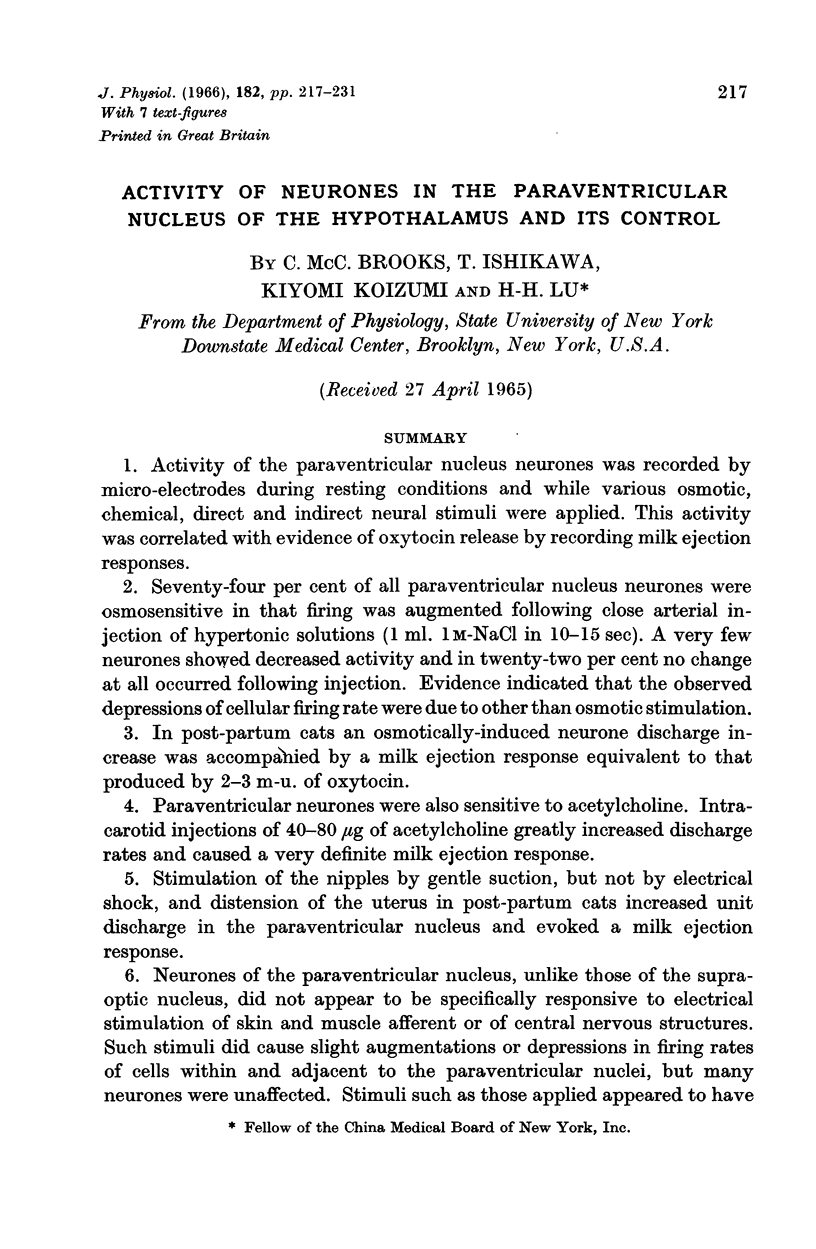
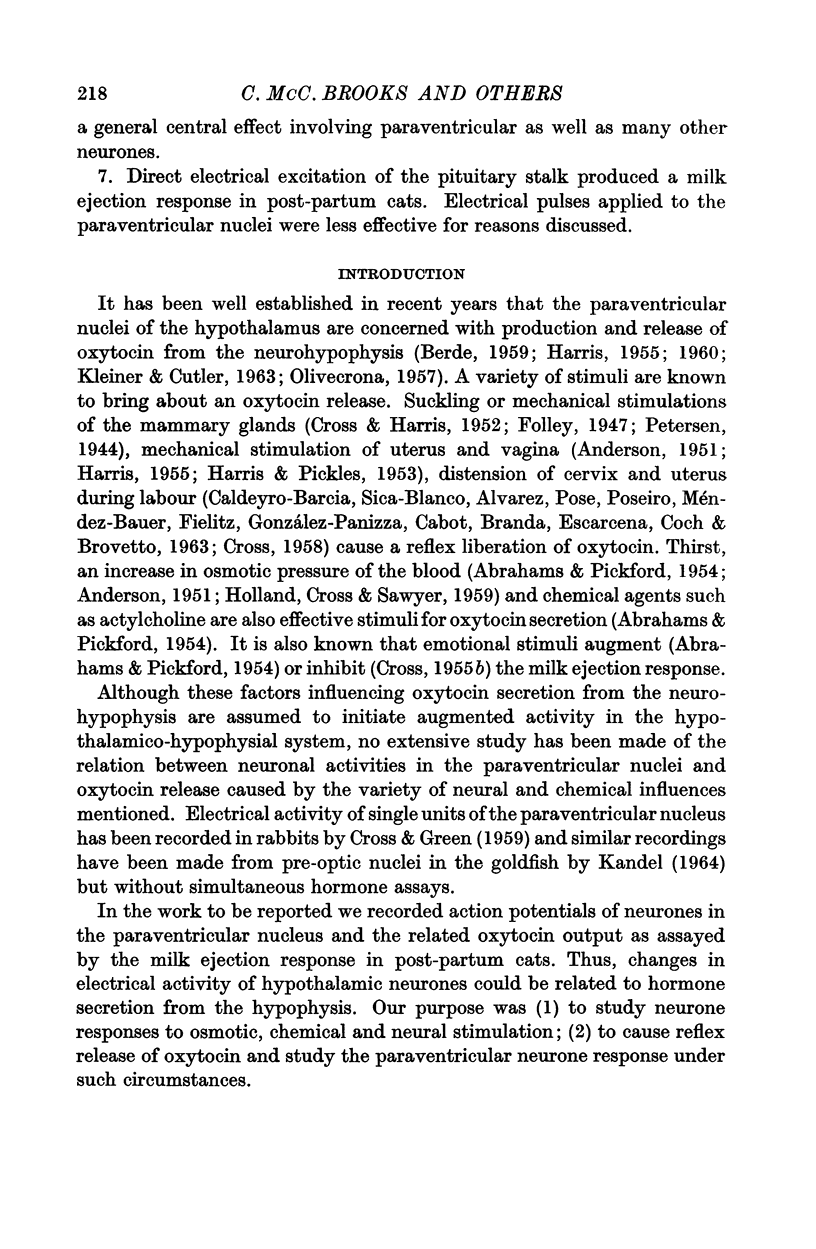
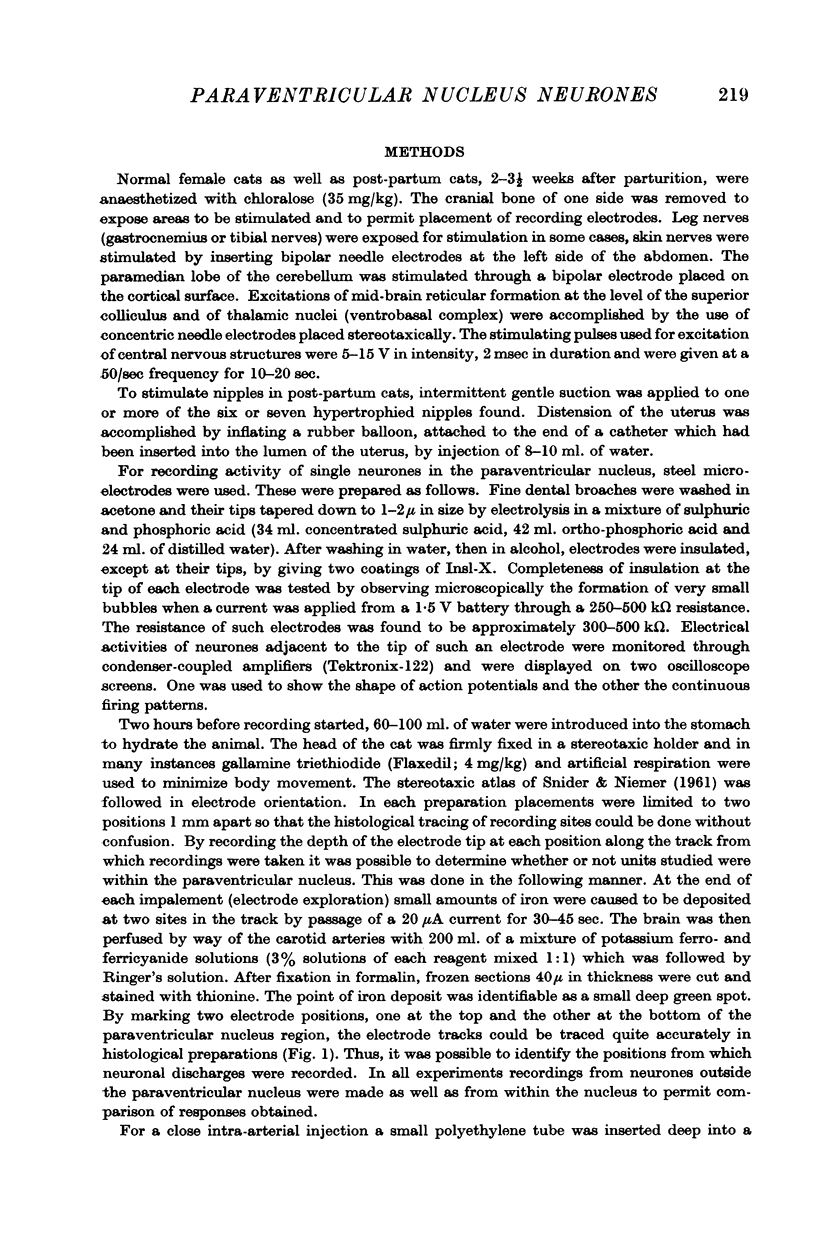
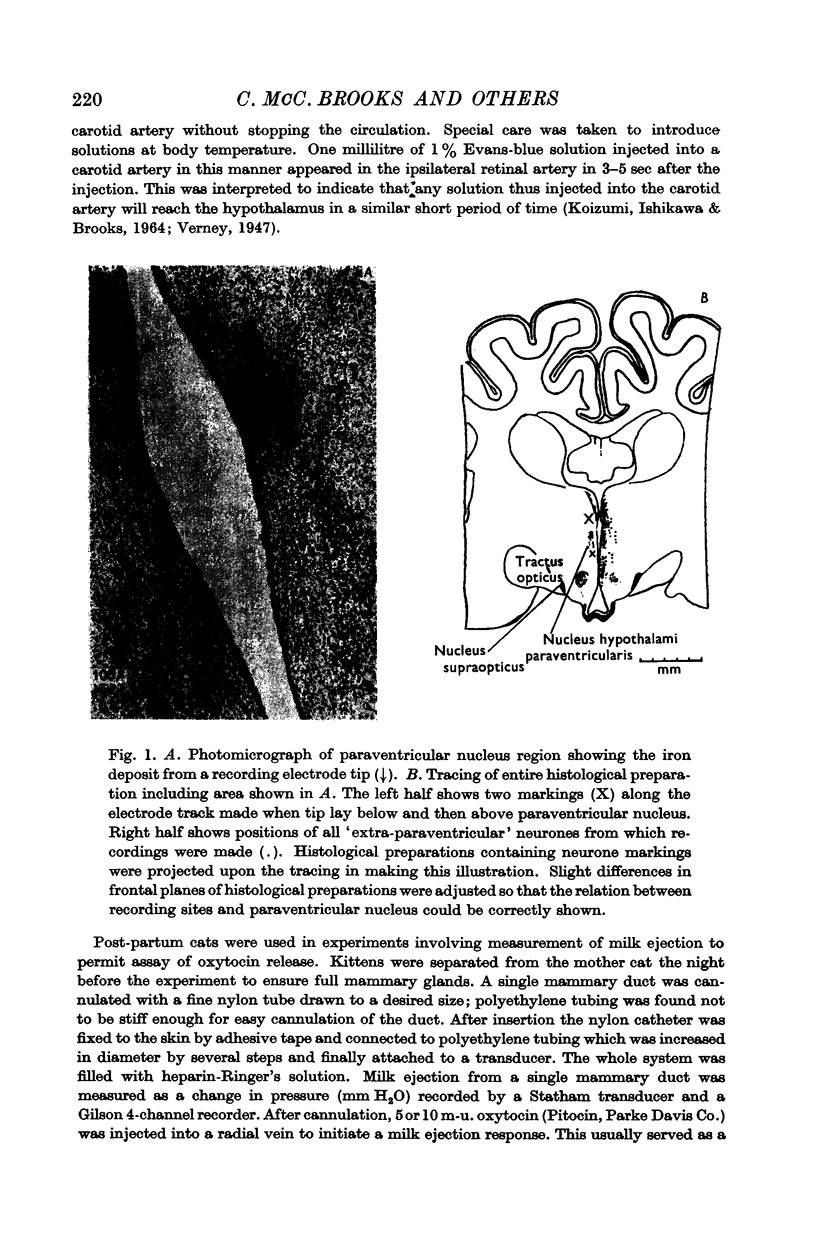
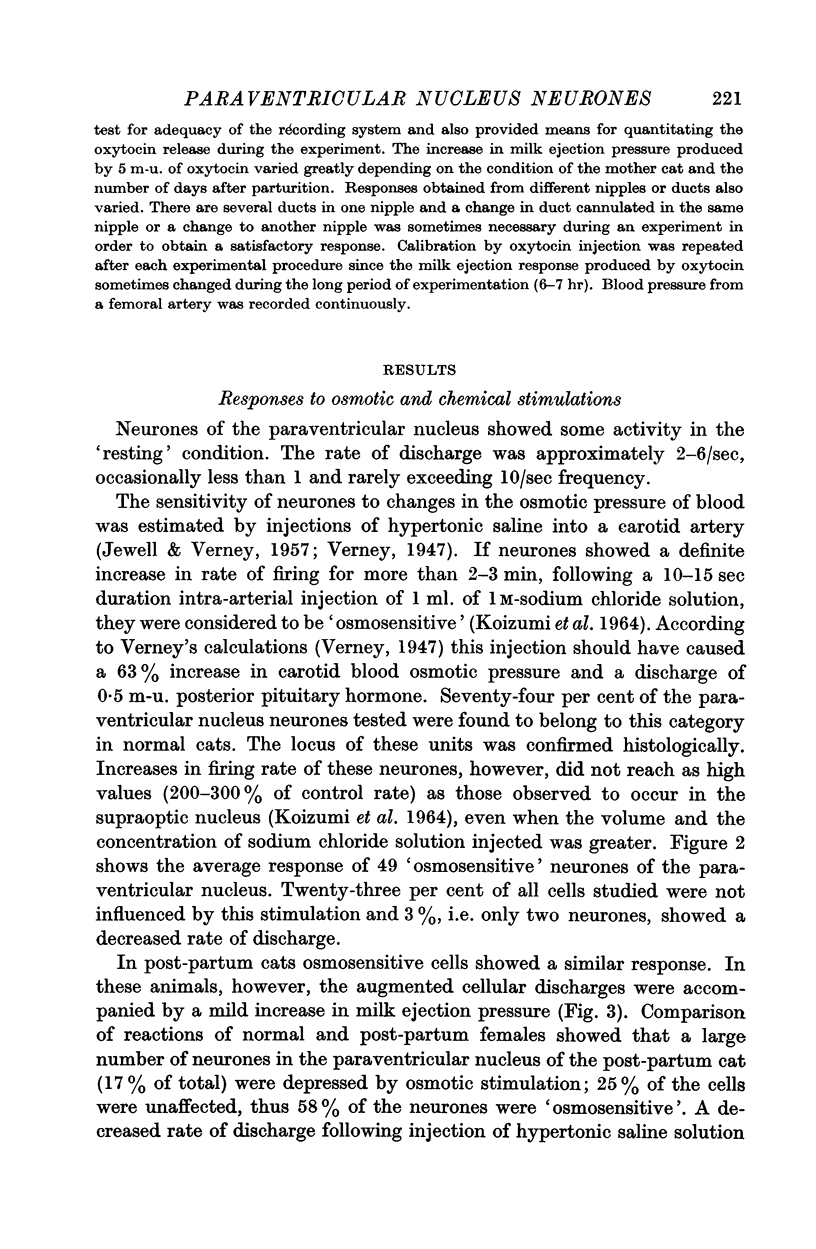
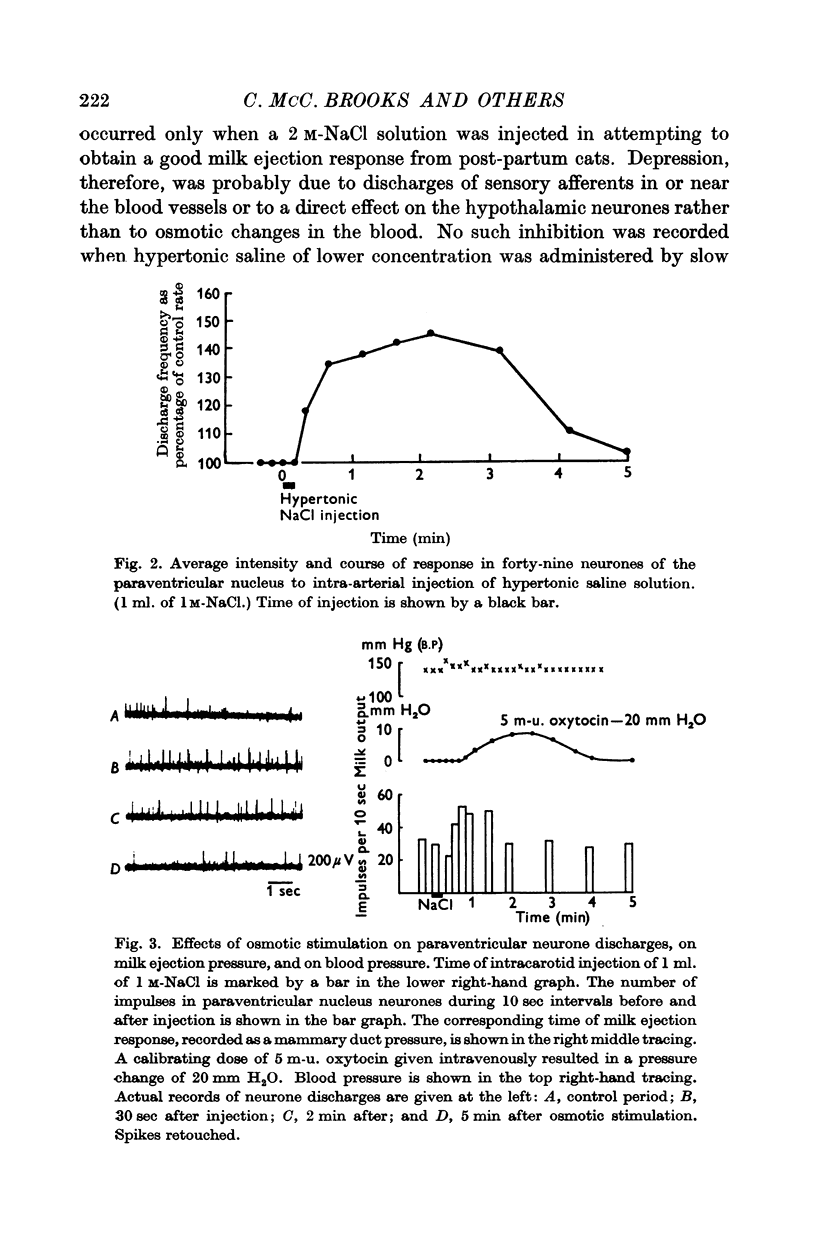
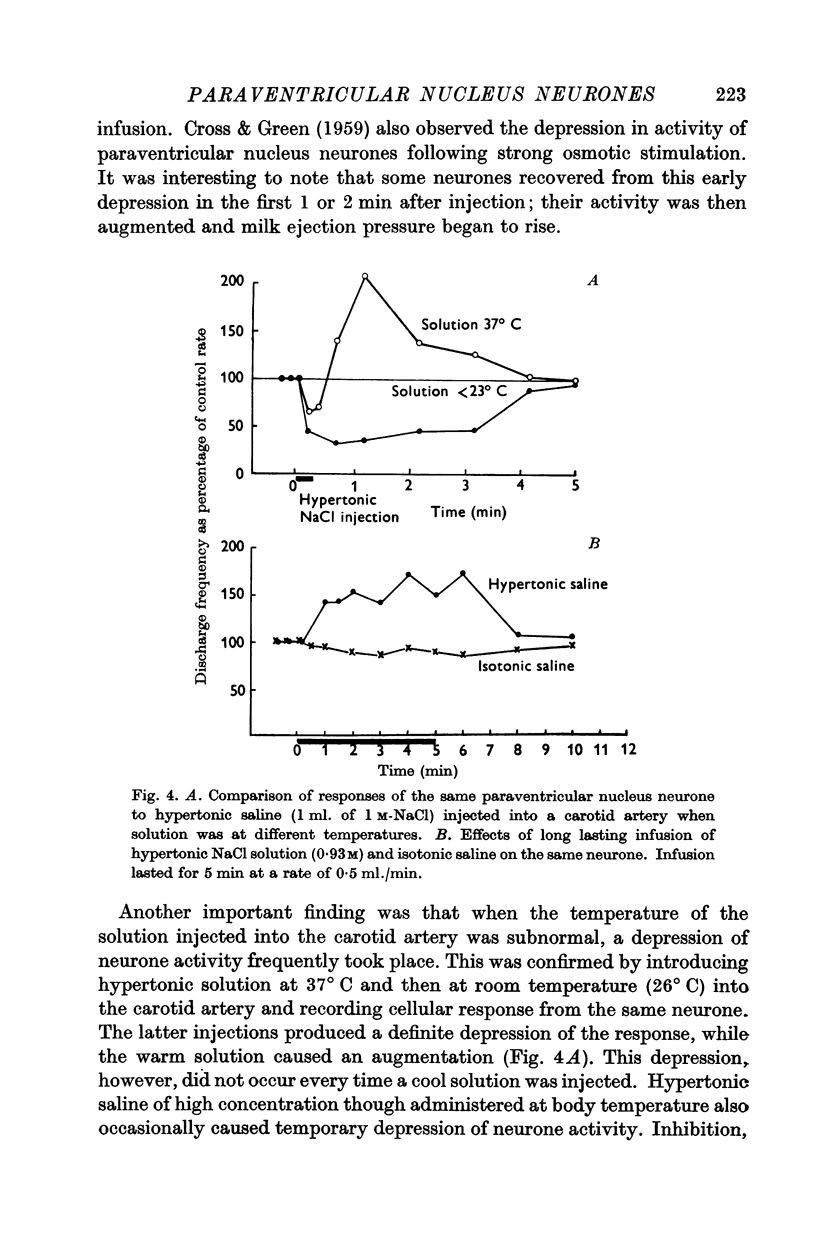
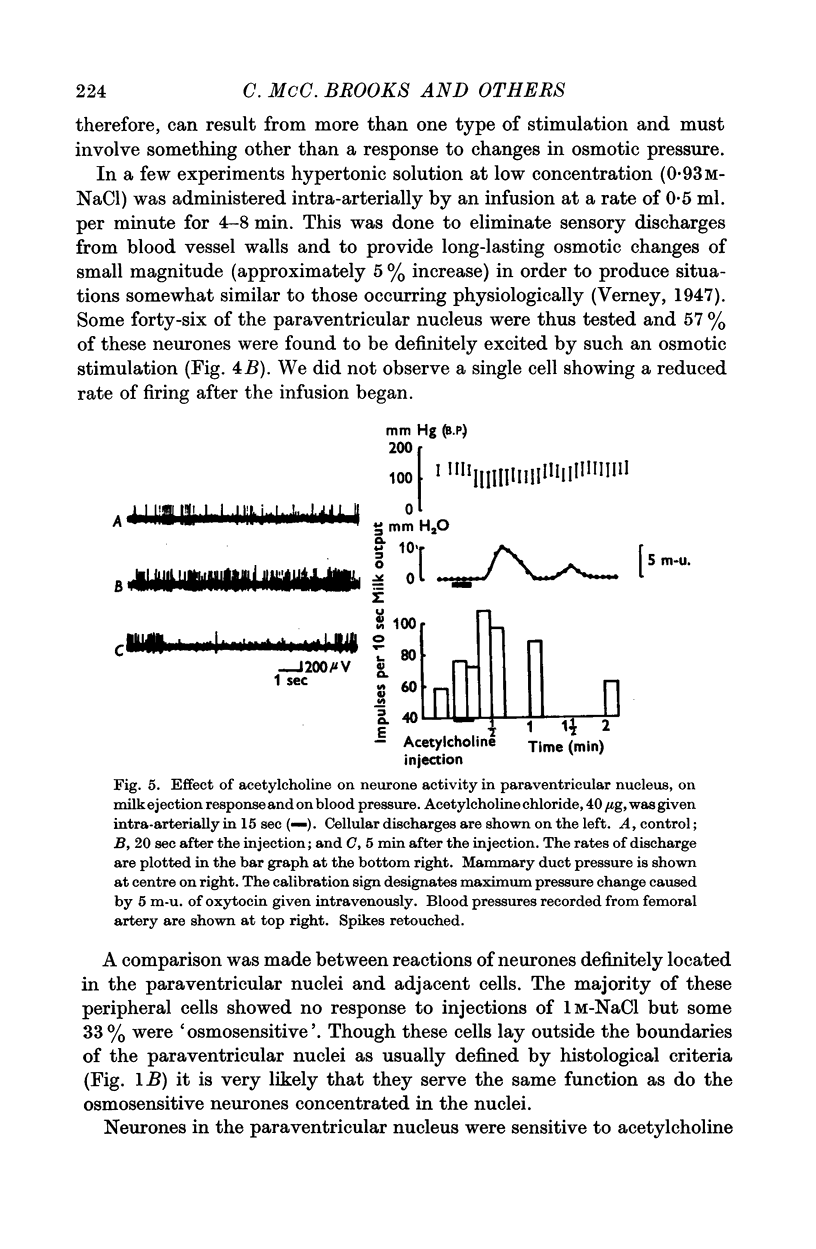
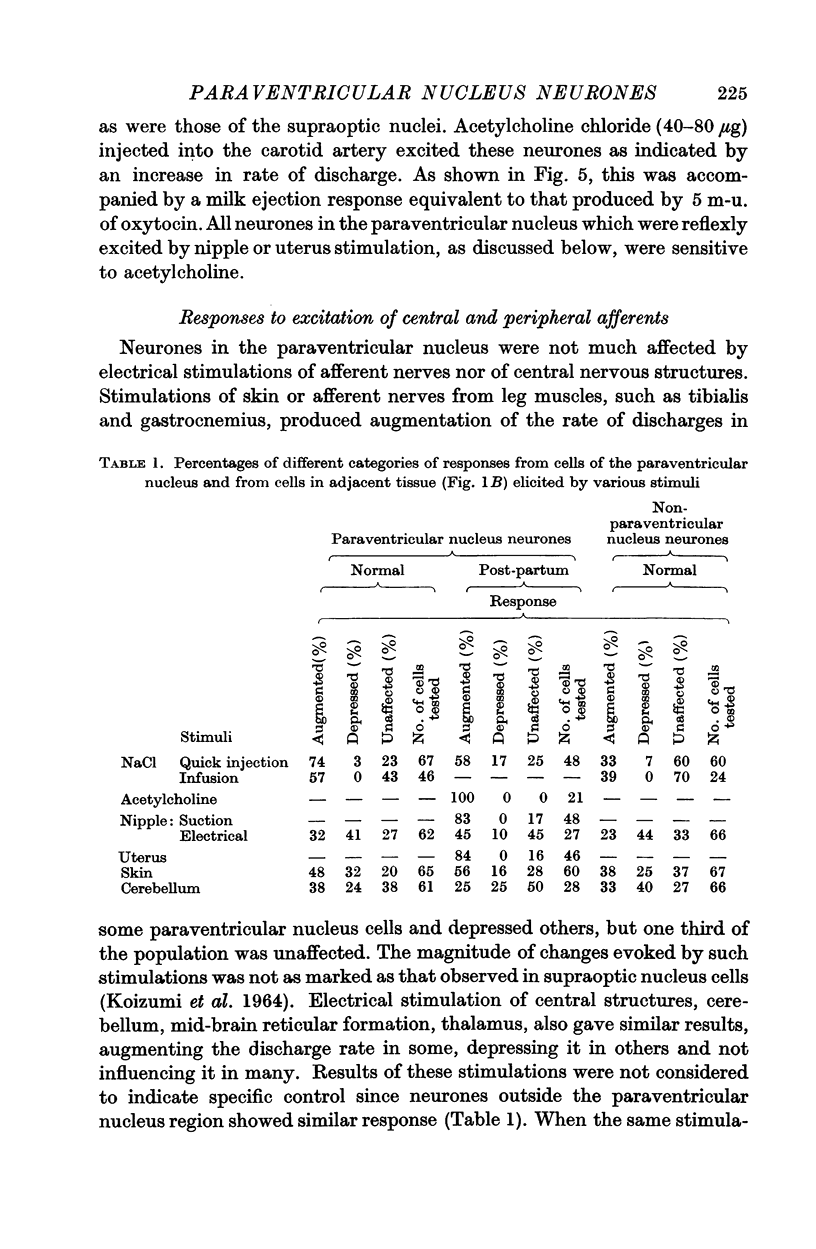
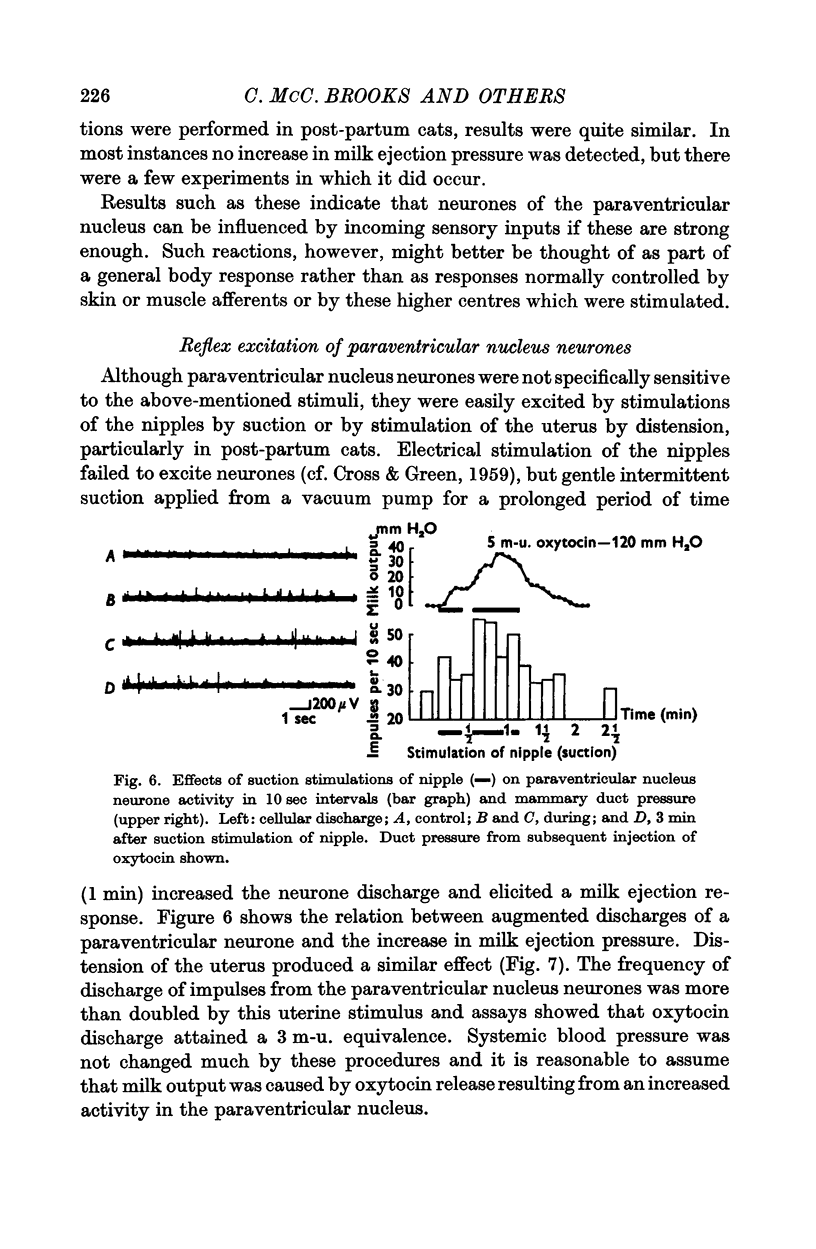
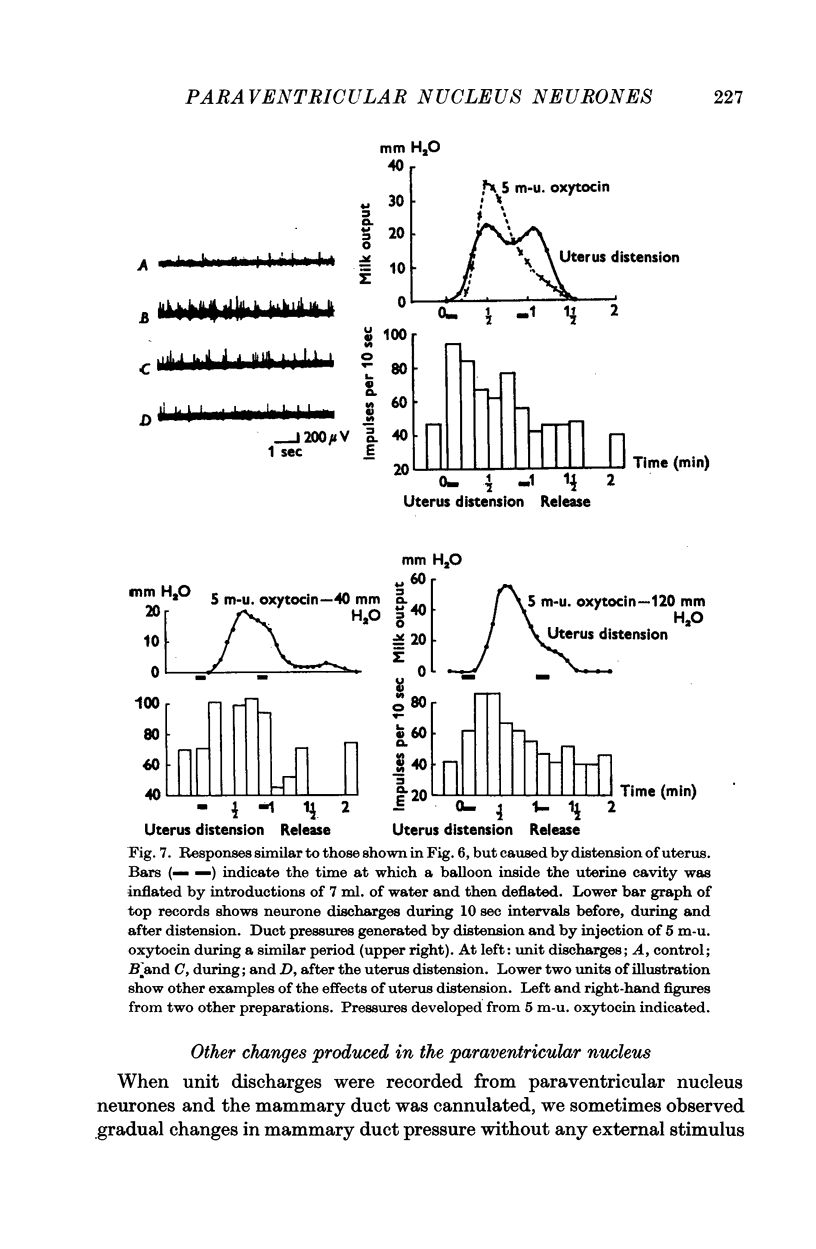
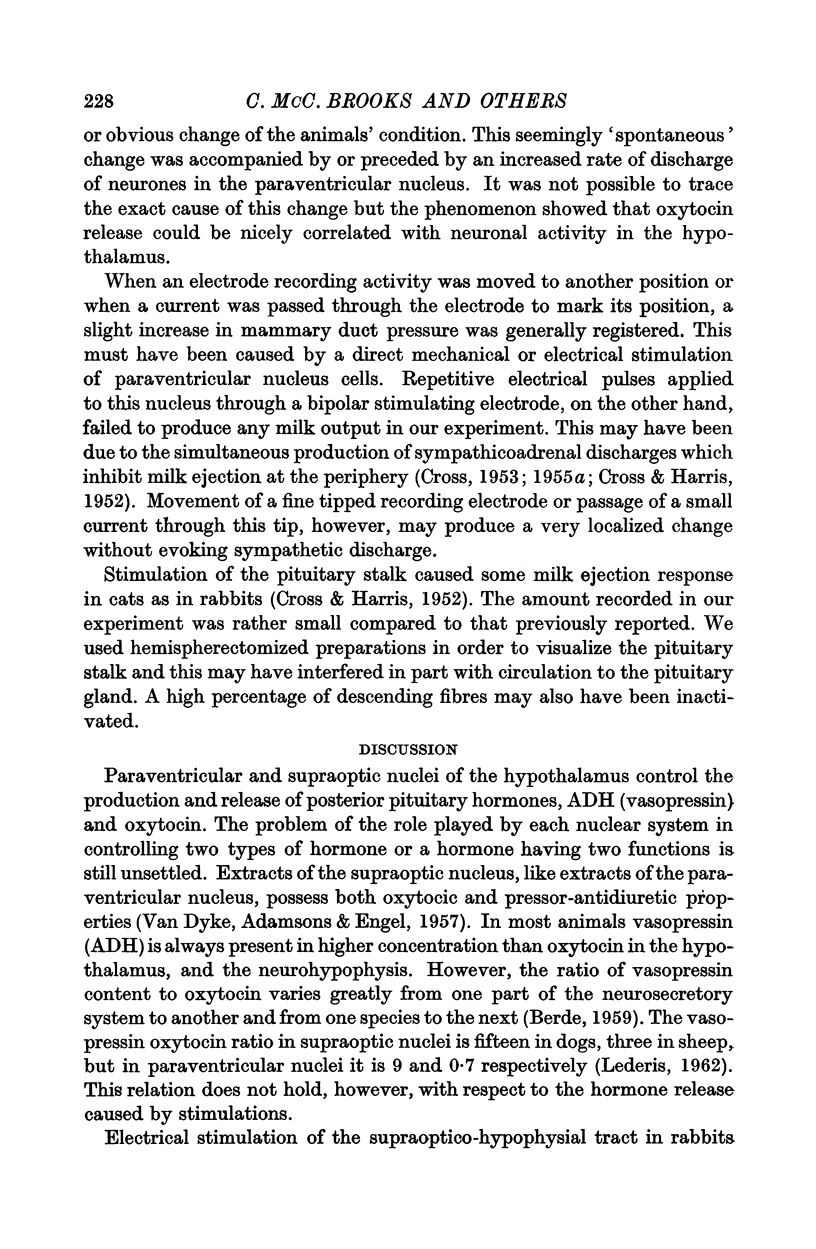
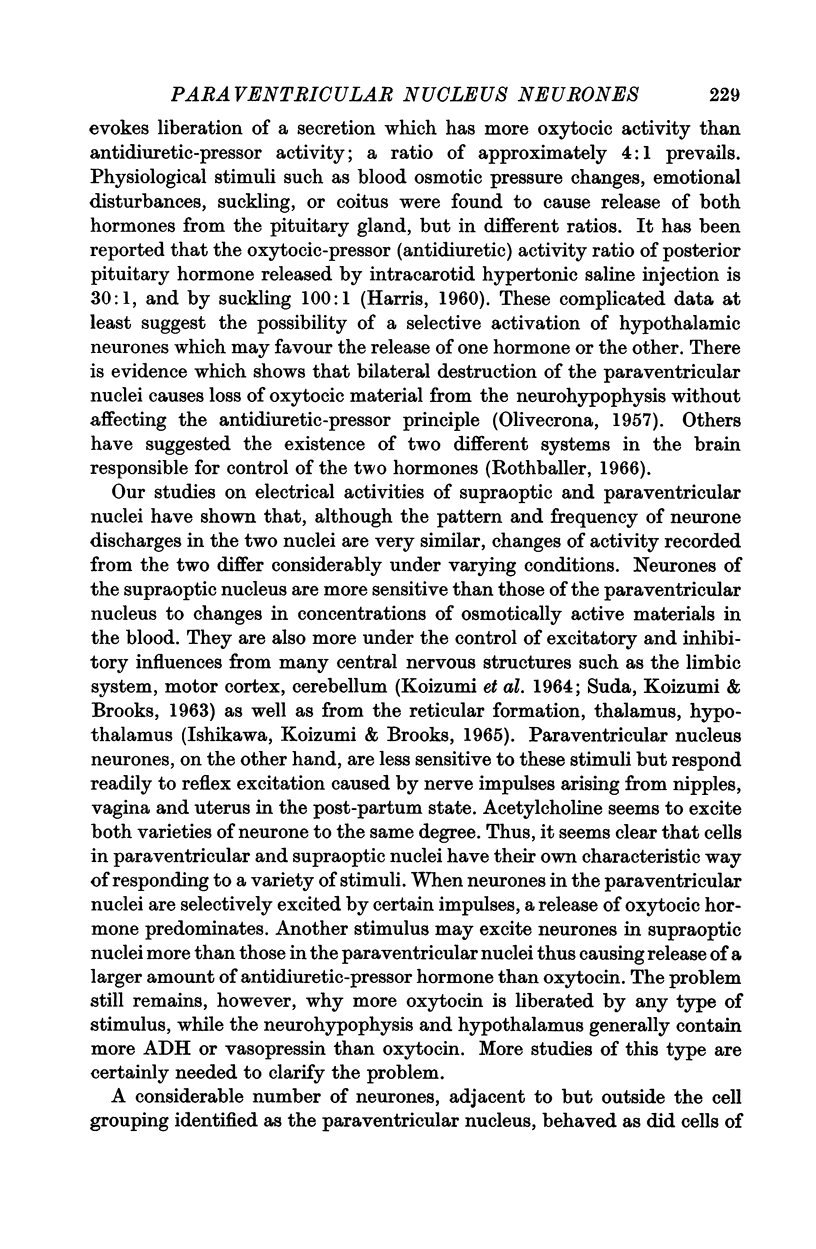
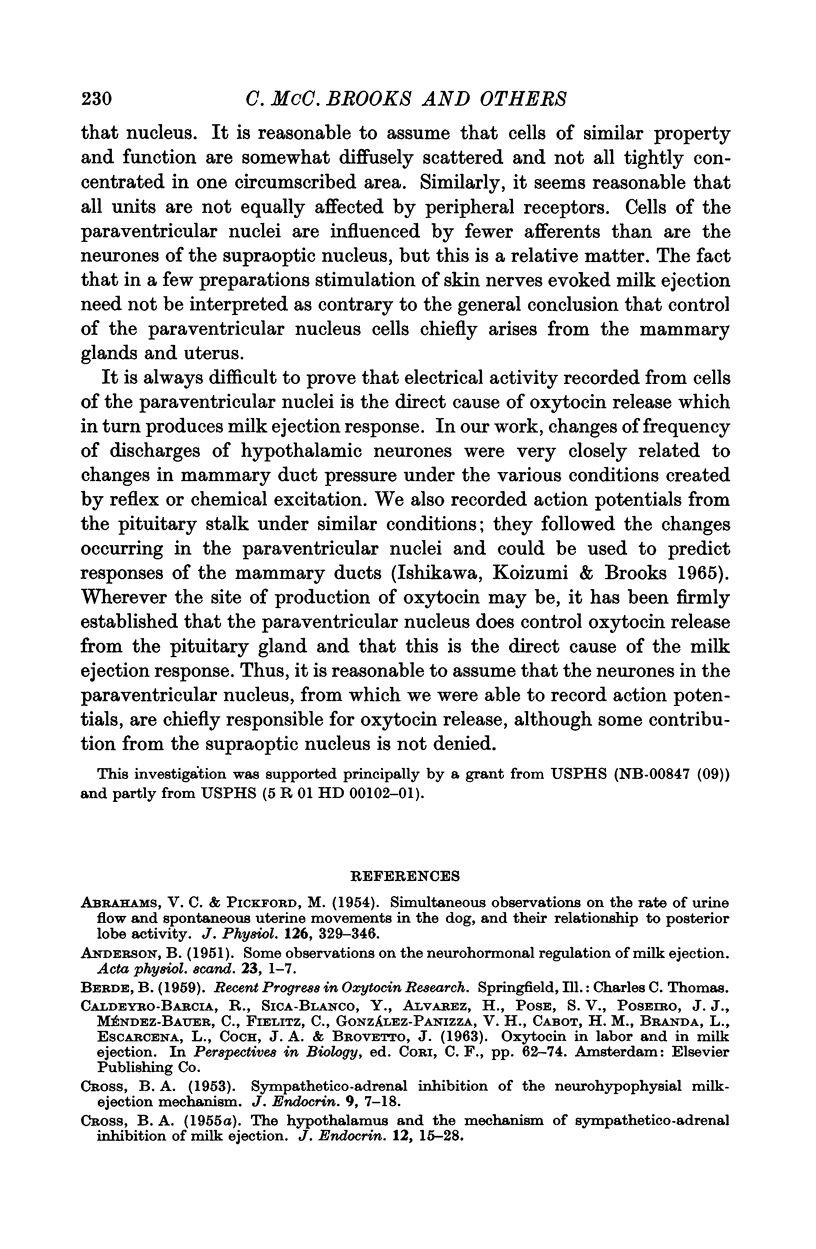
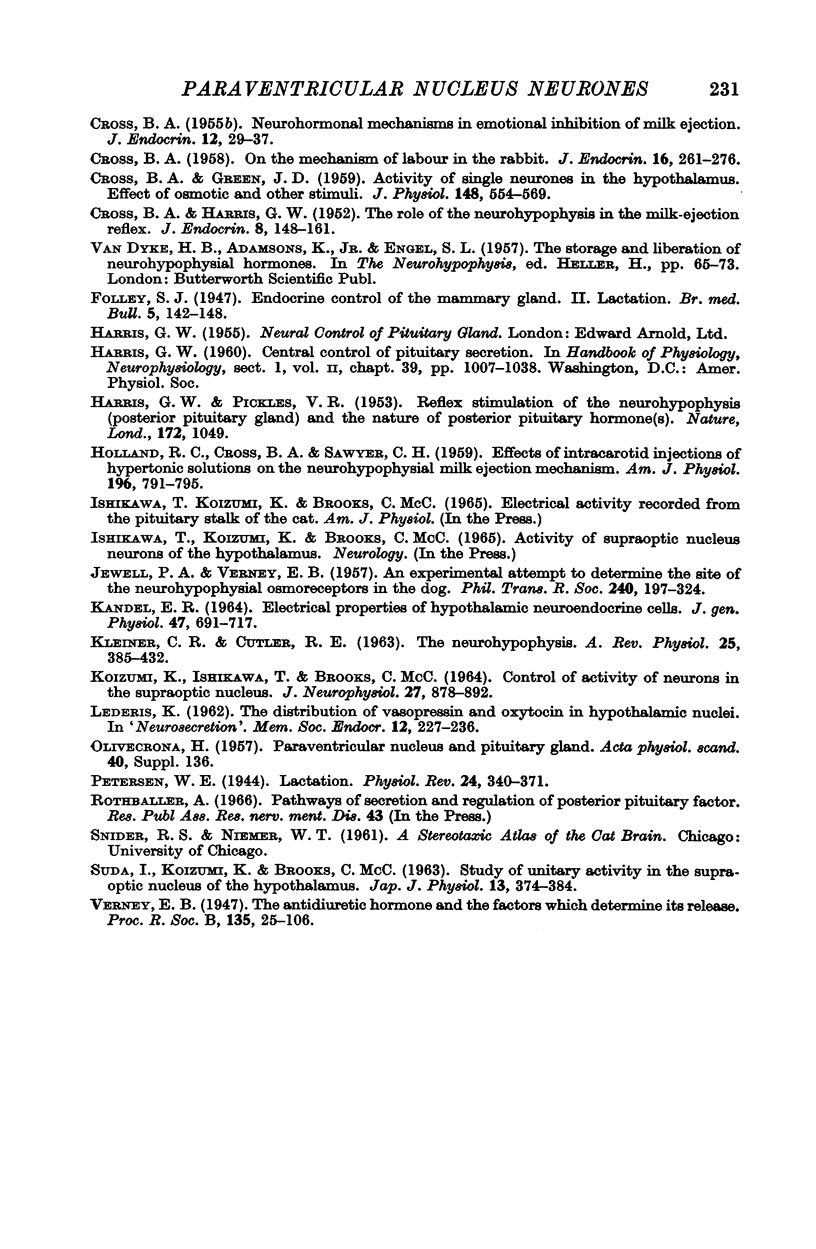
Images in this article
Selected References
These references are in PubMed. This may not be the complete list of references from this article.
- ABRAHAMS V. C., PICKFORD M. Simultaneous observations on the rate of urine flow and spontaneous uterine movements in the dog, and their relationship to posterior lobe activity. J Physiol. 1954 Nov 29;126(2):329–346. doi: 10.1113/jphysiol.1954.sp005213. [DOI] [PMC free article] [PubMed] [Google Scholar]
- CROSS B. A., GREEN J. D. Activity of single neurones in the hypothalamus: effect of osmotic and other stimuli. J Physiol. 1959 Oct;148:554–569. doi: 10.1113/jphysiol.1959.sp006306. [DOI] [PMC free article] [PubMed] [Google Scholar]
- CROSS B. A., HARRIS G. W. The role of the neurohypophysis in the milk-ejection reflex. J Endocrinol. 1952 Apr;8(2):148–161. doi: 10.1677/joe.0.0080148. [DOI] [PubMed] [Google Scholar]
- CROSS B. A. Neurohormonal mechanisms in emotional inhibition of milk ejection. J Endocrinol. 1955 Jan;12(1):29–37. doi: 10.1677/joe.0.0120029. [DOI] [PubMed] [Google Scholar]
- CROSS B. A. On the mechanism of labour in the rabbit. J Endocrinol. 1958 Feb;16(3):261–276. doi: 10.1677/joe.0.0160261. [DOI] [PubMed] [Google Scholar]
- CROSS B. A. Sympathetico-adrenal inhibition of the neurohypophysial milk-ejection mechanism. J Endocrinol. 1953 Jan;9(1):7–18. [PubMed] [Google Scholar]
- CROSS B. A. The hypothalamus and the mechanism of sympathetico-adrenal inhibition of milk ejection. J Endocrinol. 1955 Jan;12(1):15–28. doi: 10.1677/joe.0.0120015. [DOI] [PubMed] [Google Scholar]
- HOLLAND R. C., CROSS B. A., SAWYER C. H. Effects of intracarotid injections of hypertonic solutions on the neurohypophyseal milk-ejection mechanism. Am J Physiol. 1959 Apr;196(4):791–795. doi: 10.1152/ajplegacy.1959.196.4.791. [DOI] [PubMed] [Google Scholar]
- KOIZUMI K., ISHIKAWA T., BROOKS C. M. CONTROL OF ACTIVITY OF NEURONS IN THE SUPRAOPTIC NUCLEUS. J Neurophysiol. 1964 Sep;27:878–892. doi: 10.1152/jn.1964.27.5.878. [DOI] [PubMed] [Google Scholar]
- SUDA I., KOIZUMI K. STUDY OF UNITARY ACTIVITY IN THE SUPRAOPTIC NUCLEUS OF THE HYPOTHALAMUS. Jpn J Physiol. 1963 Aug 15;13:374–385. doi: 10.2170/jjphysiol.13.374. [DOI] [PubMed] [Google Scholar]



